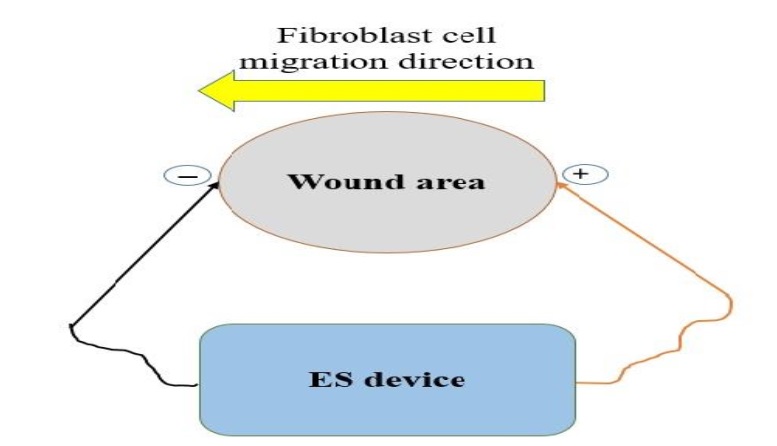Wound Healing Using Electrical Stimulation: A Review
DOI:
https://doi.org/10.51173/jt.v5i4.1225Keywords:
Electrical Stimulation, High Voltage Pulsed Current, Low Voltage Pulsed Current, Direct Current DC, Pulse CurrentAbstract
The wound healing process is considered one of the most important elements of progress in the health and medical reality alike, because it has a direct impact on the patient’s life, especially those who suffer from chronic diseases such as diabetes mellitus and others. All over the world, especially in developing countries, many people are exposed to afflictions due to the lack of ability to heal wounds or the delay in their recovery. The healing of wounds is always attributed to the ability of the affected skin to produce an electric current that helps the migration of stem cells and platelets to the place of extraction For the sake of healing, this is why electrical stimulation ES devices played an important role in the process of stimulation and wound treatment through using the high voltage pulsed current HVPC, low voltage pulsed current LVPC, direct current DC or pulse current PC. In this study, we review some of the important works that touched on this field in terms of the aim of their studies and the outcome that was reached, and the results were extracted. We also discuss the problems that faced researchers, especially those problems that Their studies miss it.
Downloads
References
R. Fukuda et al., "Mild electrical stimulation at 0.1-ms pulse width induces p53 protein phosphorylation and G2 arrest in human epithelial cells," Journal of Biological Chemistry, vol. 288, no. 22, pp. 16117-16126, 2013. DOI:https://doi.org/10.1074/jbc.M112.442442.
M. Ben Amar and M. Wu, "Re-epithelialization: advancing epithelium frontier during wound healing," Journal of The Royal Society Interface, vol. 11, no. 93, p. 20131038, 2014. https://doi.org/10.1098/rsif.2013.1038.
L. C. Kloth, "Electrical stimulation technologies for wound healing," Advances in wound care, vol. 3, no. 2, pp. 81-90, 2014. doi: 10.1089/wound.2013.0459.
G. Gainza, S. Villullas, J. L. Pedraz, R. M. Hernandez, and M. Igartua, "Advances in drug delivery systems (DDSs) to release growth factors for wound healing and skin regeneration," Nanomedicine: Nanotechnology, Biology and Medicine, vol. 11, no. 6, pp. 1551-1573, 2015. DOI: 10.1016/j.nano.2015.03.002.
A. Yadollahpour, S. Rashidi, and R. Fayazi, "Electrical Stimulation for Chronic Wound Treatment: Basic Principles and Current Clinical Position," J Med Res Pract, vol. 6, no. 3, pp. 76-80, 2017. DOI:10.20936/jmrp/17/03/002.
X. Chen, Y. Song, H. Chen, J. Zhang, and H. Zhang, "An ultrathin stretchable triboelectric nanogenerator with coplanar electrode for energy harvesting and gesture sensing," Journal of materials chemistry A, vol. 5, no. 24, pp. 12361-12368, 2017. https://doi.org/10.1039/C7TA03092D.
E. A. Kamoun, E.-R. S. Kenawy, and X. Chen, "A review on polymeric hydrogel membranes for wound dressing applications: PVA-based hydrogel dressings," Journal of advanced research, vol. 8, no. 3, pp. 217-233, 2018. DOI: 10.1016/j.jare.2017.01.005.
C. Chen, X. Bai, Y. Ding, and I.-S. Lee, "Electrical stimulation as a novel tool for regulating cell behavior in tissue engineering," Biomaterials research, vol. 23, no. 1, pp. 1-12, 2019. doi: 10.1186/s40824-019-0176-8.
A. D. J. Bombin, "Electrospinning of natural polymers for the production of nanofibres for wound healing applications," Materials Science and Engineering, vol. 114, no. 110994, p. 16, 2020, doi: 10.1016. https://doi.org/10.1016/j.msec.2020.110994.
G. H. Gnanasambanthan and D. Maji, "Simulation and Fabrication of Micro-Electrode Arrays for Electrical Stimulation Induced Wound Healing," IEEE Access, vol. 10, pp. 131855-131866, 2022. DOI: 10.1109/ACCESS.2022.3229686.
T. Greig, R. Torah, and K. Yang, "Electrical Stimulation for Wound Healing: Opportunities for E-Textiles," IEEE Reviews in Biomedical Engineering, 2022. DOI: 10.1109/RBME.2022.3210598.
S. B. Rajendran, K. Challen, K. L. Wright, and J. G. Hardy, "Electrical stimulation to enhance wound healing," Journal of Functional Biomaterials, vol. 12, no. 2, p. 40, 2021. doi: 10.3390/jfb12020040.
G. Melotto, T. Tunprasert, and J. R. Forss, "The effects of electrical stimulation on diabetic ulcers of foot and lower limb: A systematic review," International Wound Journal, 2022. DOI: 10.1111/iwj.13762.
M. Verdes, K. Mace, L. Margetts, and S. Cartmell, "Status and challenges of electrical stimulation use in chronic wound healing," Current Opinion in Biotechnology, vol. 75, p. 102710, 2022. https://doi.org/10.1016/j.copbio.2022.102710.
S.-H. Jeong, Y. Lee, M.-G. Lee, W. J. Song, J.-U. Park, and J.-Y. Sun, "Accelerated wound healing with an ionic patch assisted by a triboelectric nanogenerator," Nano Energy, vol. 79, p. 105463, 2021. https://doi.org/10.1016/j.nanoen.2020.105463.
A. Sebastian, S. A. Iqbal, J. Colthurst, S. W. Volk, and A. Bayat, "Electrical stimulation enhances epidermal proliferation in human cutaneous wounds by modulating p53–SIVA1 interaction," Journal of Investigative Dermatology, vol. 135, no. 4, pp. 1166-1174, 2015. https://doi.org/10.1038/jid.2014.502.
S. Snyder, C. DeJulius, and R. K. Willits, "Electrical stimulation increases random migration of human dermal fibroblasts," Annals of Biomedical Engineering, vol. 45, no. 9, pp. 2049-2060, 2017. DOI: 10.1007/s10439-017-1849-x.
Y. Long et al., "Effective wound healing enabled by discrete alternative electric fields from wearable nanogenerators," ACS nano, vol. 12, no. 12, pp. 12533-12540, 2018. DOI: 10.1021/acsnano.8b07038.
W. Hu et al., "Enhancing proliferation and migration of fibroblast cells by electric stimulation based on triboelectric nanogenerator," Nano Energy, vol. 57, pp. 600-607, 2019. https://doi.org/10.1016/j.nanoen.2018.12.077.
Y. Liang et al., "Application of stable continuous external electric field promotes wound healing in pig wound model," Bioelectrochemistry, vol. 135, p. 107578, 2020. https://doi.org/10.1016/j.bioelechem.2020.107578.
X.-F. Wang et al., "Flexible electrical stimulation device with Chitosan-Vaseline® dressing accelerates wound healing in diabetes," Bioactive materials, vol. 6, no. 1, pp. 230-243, 2021. DOI: 10.1016/j.bioactmat.2020.08.003.
A. Abedin‐Do, Z. Zhang, Y. Douville, M. Méthot, J. Bernatchez, and M. Rouabhia, "Electrical stimulation promotes the wound‐healing properties of diabetic human skin fibroblasts," Journal of Tissue Engineering and Regenerative Medicine, vol. 16, no. 7, pp. 643-652, 2022. DOI: 10.1002/term.3305.

Downloads
Published
How to Cite
Issue
Section
License
Copyright (c) 2023 Farah Jala Jaseem, Jameel Kadhim Abed, Ahmed Rashid Ajel, Noaman Mohammad Noaman

This work is licensed under a Creative Commons Attribution 4.0 International License.
















